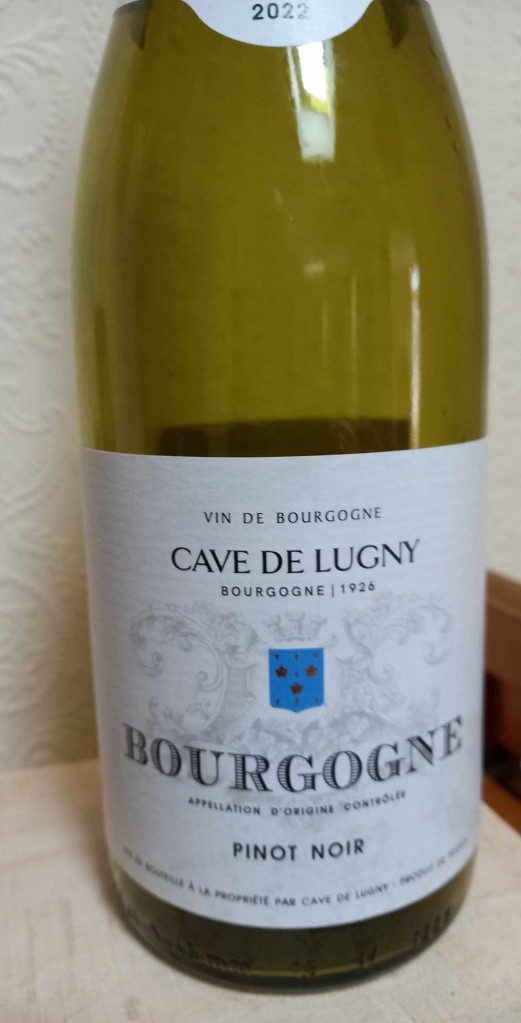Red Burgundies from the top estates are among the most sought-after wines in the world. Investors will pay stratospheric prices (£1000 and more per bottle is not unknown at wine auctions) for those few special names. Their aim is, in general, not to drink them but to sell them on to others – sometimes without even seeing the bottle, which will be kept carefully in regulated, secure and temperature-controlled storage. This isn’t for me; I buy wine to drink and enjoy with friends – not for sale. But the action of these investors does affect me and other consumers like me. It increases demand for the next-best bottles, driving up their prices and this in turn has a knock-on effect right down to the entry-level wines. As a result, almost no red Burgundy worth drinking is particularly cheap.
So, when I saw a bottle from the excellent Cave de Lugny co-operative at £14.99 in Majestic (as part of their ‘mix 6’ deal), it seemed a good buy. Cave de Lugny is one of the largest and most successful cooperatives in France with over 400 grower members and you’ll find their wines – both red and white – in many supermarkets (often under the supermarket’s own label) as well as in Majestic. They also export to the USA.
But what about the wine itself? Not particularly deep-coloured (typical for Pinot Noir) and with quite a restrained nose, it was attractively fresh on the palate with a nice mix of red fruits and a hint of earthy spice. Rather lighter-bodied than I had expected from vineyards in the warmest, southern-most part of Burgundy and, despite a touch of tannin, it is very much a wine for now, rather than for keeping. Pair with coq au vin, rather than anything more substantial.
On reflection, if I was looking for a Pinot Noir for around £15, rather than buy a red Burgundy, I’d have done far better choosing something from Chile or New Zealand, perhaps, where the malign influence of those who buy wine simply to sell on has, happily, yet to reach.



